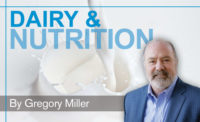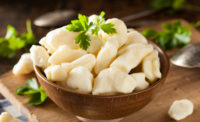
After a sustained period of fewer wars and the fact that fewer people went to bed hungry each night, our world is experiencing an intense period of heightened global conflict with serious geopolitical consequences, altering our nation’s security.
The UN Food and Agriculture Organization estimates that between 691 million and 783 million people were hungry globally in 2022, effectively erasing progress made since 2015. In addition, food insecurity rose from 25.3% in 2019 to 29.6% in 2022, with severe food insecurity affecting 11.3% of the global population. The UN World Food Program (WFP) reports more people — 345 million — are facing severe hunger. This is an increase of almost 200 million people compared to early 2020, before the COVID-19 pandemic.
If history has proved anything, it is that there is a direct link between hunger and unrest, meaning the spike in global food insecurity has potential consequences for the safety and security of the United States and our allies around the world.
Working to remain one step ahead of challenges, the U.S. Department of Agriculture recently announced nearly a half billion dollars in Food for Progress and McGovern Dole Program funding to strengthen global food security using U.S. commodities. Many of us in the food and agriculture community are proud that the United States is the largest bilateral donor of international food assistance. Collectively, our government spends about $4 billion per year to provide international food assistance to food-insecure countries to avert humanitarian crises and in development assistance to support agriculture and related sectors.
Dairy, including milk and whey powders, are some of the most nourishing commodities available. However, just a fraction of the funds available to purchase food aid goes to U.S. dairy products. We must change that, especially when dairy’s nutritional profile is unmatched and our nation’s capacity to be a reliable supplier is unmatched around the world.
Recently, I wrote to USDA Under Secretary for Trade and Foreign Agricultural Affairs Alexis Taylor, as well as chief agricultural negotiator in the White House, Ambassador Doug McKalip, and others to express IDFA’s continued support of efforts to eradicate global food insecurity, a cause deeply ingrained in our industry.
In fact, IDFA members are so committed to eradicating global food insecurity that they donate to the IDFA Foundation, which has delivered grants to nonprofits working to reduce hunger, including to nonprofit companies that make nutrient-dense ready-to-use foods that are subsequently distributed in some of the world’s most malnourished populations for children and mothers. Manufactured in the U.S., using mostly U.S.-grown peanuts and U.S.-produced milk and whey powders, these dairy products represent the best of America’s generosity and innovation.
But dairy, on the whole, is severely underrepresented in U.S.-derived food assistance despite its well-documented importance in a healthy diet and among chronically undernourished populations. That is why we must strongly encourage USDA, the State Department, and USAID to include dairy products, such as milk powders, in USDA’s food security initiatives. The Dietary Guidelines for Americans (DGA) repeatedly recommend nutrient-rich dairy as part of a healthy eating pattern. Moreover, similar guidelines and recommendations are repeated around the world.
The International Dairy Federation surveyed national-level food-based dietary guidelines (FBDGs) from around the world and found that approximately 75% of these guidelines recommend dairy consumption as a critical source of nutrients across all stages of life.
There is no question that dairy products are nutrient-rich and an affordable source of 13 essential nutrients like protein, calcium, phosphorus, potassium, zinc, iodine, selenium, magnesium and vitamins A, D, B12, riboflavin (B2) and pantothenic acid (B5). For vulnerable populations, especially children, it is imperative to maximize nutritional value in their food delivery, making dairy an optimal choice.
IDFA is confident that dairy products align perfectly with the objectives of the U.S. food security initiatives and will continue to collaborate with the U.S. dairy community to urge their increased inclusion in future food aid purchases and programming decisions.
To learn more about the IDFA Foundation’s work, visit www.idfafoundation.org.




